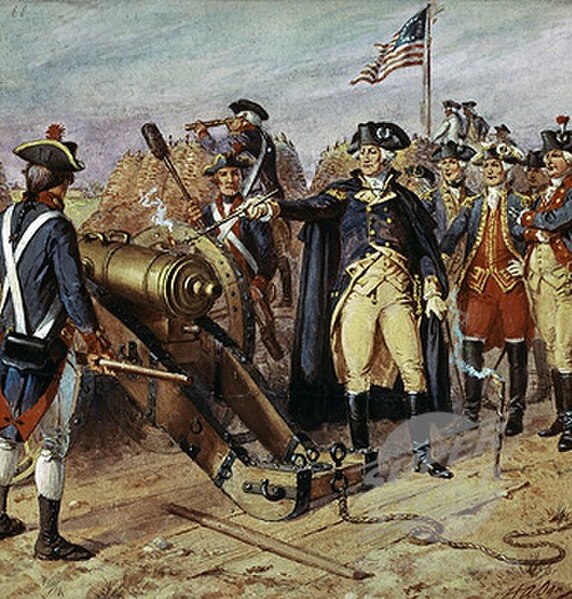Thomas Nelson Jr. was a Founding Father of the United States, general in the Revolutionary War, member of the Continental Congress, and a Virginia planter. In addition to serving many terms in the Virginia General Assembly, he twice represented Virginia in the Congress, where he signed the Declaration of Independence in 1776. Fellow Virginia legislators elected him to serve as the commonwealth's governor in 1781, the same year he fought as a brigadier general in the siege of Yorktown, the final battle of the war.
Engraving by Henry Bryan Hall
Portrait by Mason Chamberlin, 18th century
"York Hall," Captain George Preston Blow House, 1914, the home of Thomas Nelson Jr., 1738–1739.
The siege of Yorktown, also known as the Battle of Yorktown and the surrender at Yorktown, began September 28, 1781, and ended on October 19, 1781, at exactly 10:30 am in Yorktown, Virginia. It was a decisive victory by a combined force of the American Continental Army troops led by General George Washington with support from Marquis de Lafayette and French Army troops led by Comte de Rochambeau and a French naval force commanded by Comte de Grasse over the British Army commanded by British Lieutenant General Charles Cornwallis.
Surrender of Lord Cornwallis, an 1820 portrait by John Trumbull depicting the British surrendering to Benjamin Lincoln flanked by French (left) and Continental Army troops
Siège de Yorktown by Auguste Couder, c. 1836. Rochambeau (center L), Washington (center R), Marquis de La Fayette (behind Washington, R), Marquis de Saint Simon (behind Washington, L), Duke of Lauzun (L, mounted) and Comte de Ménonville (R of Washington).
Washington firing the first gun
Storming of Redoubt No. 10







